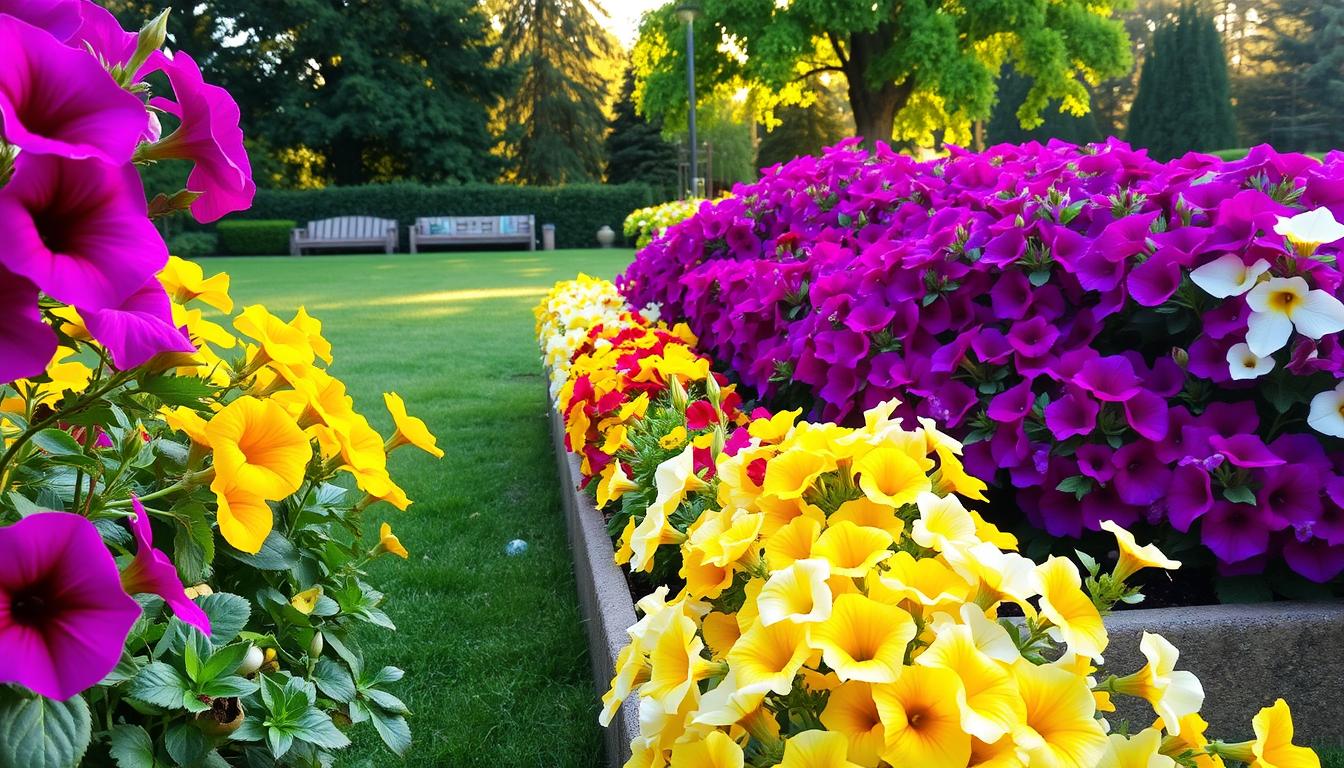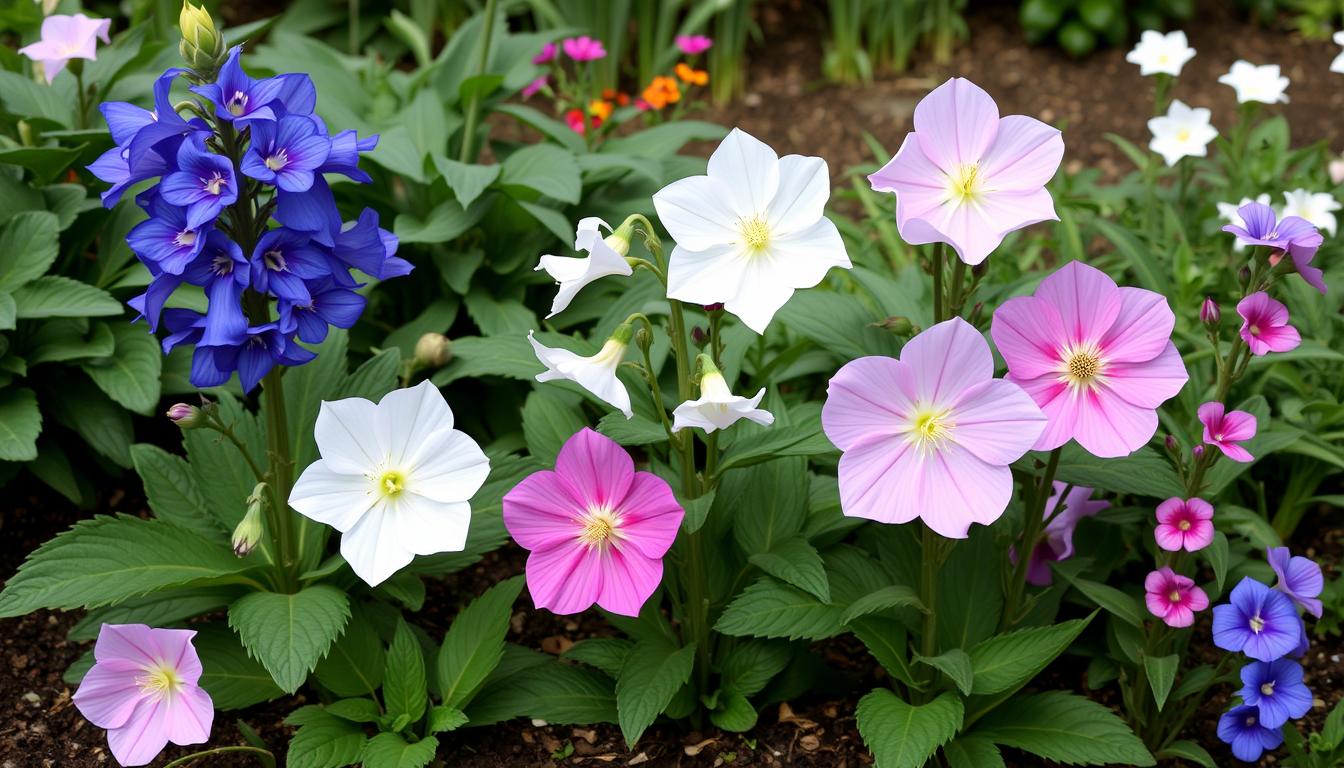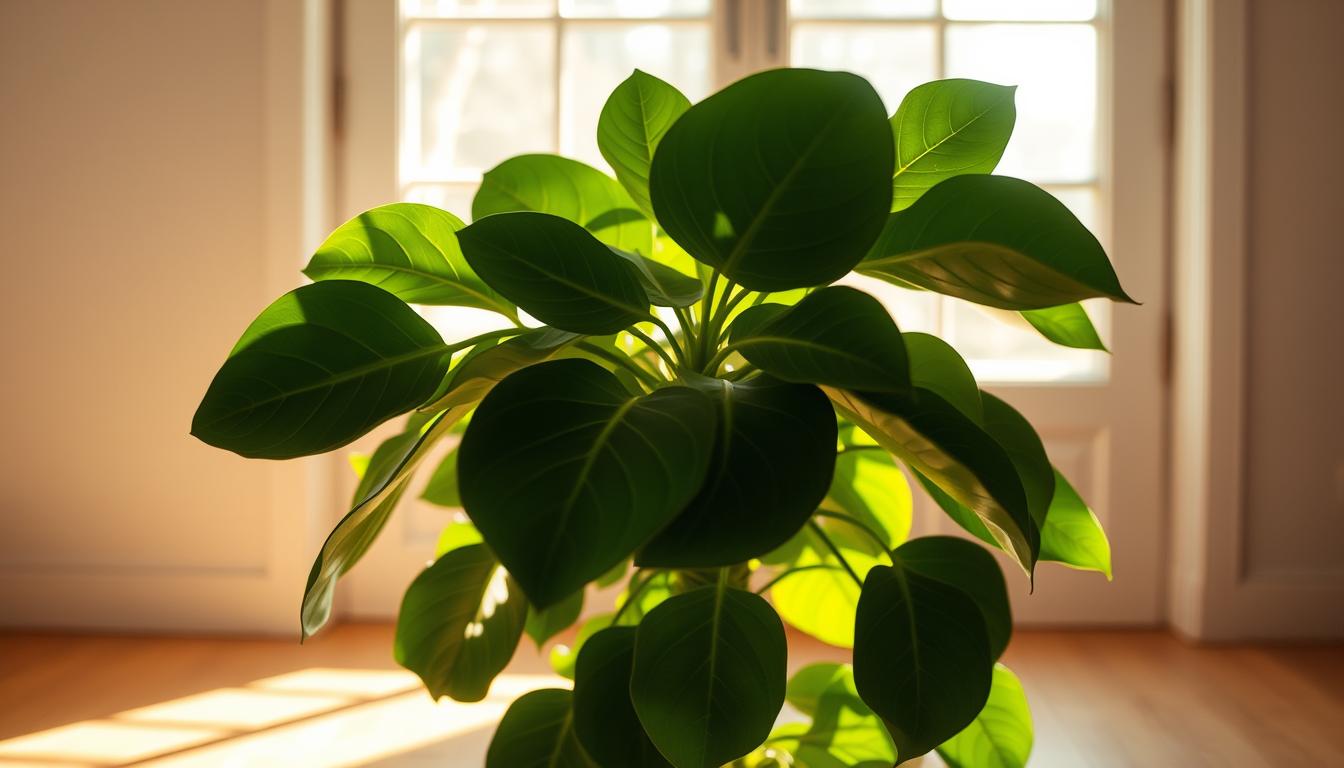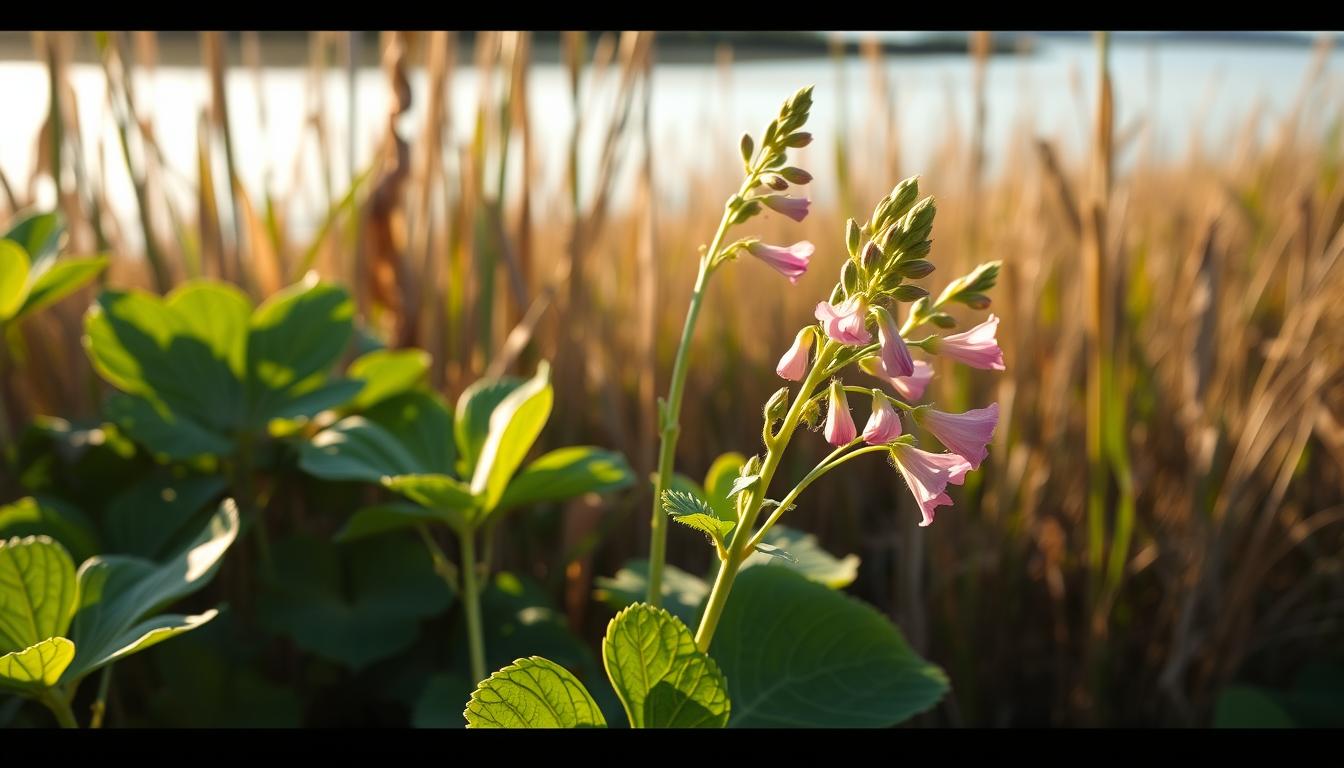How to Grow and Care For Petunias
“To plant a garden is to believe in tomorrow,” Audrey Hepburn once remarked. This timeless wisdom perfectly captures the joy of nurturing petunias, whose dazzling blooms transform outdoor spaces into living art. These floral powerhouses deliver nonstop color from spring until frost, making them a staple in American gardens.
Prized for their rainbow of hues and continuous blooms, these plants thrive as annuals across most climates. Though technically tender perennials, they’re typically grown for single-season displays. Their rapid growth surprises many gardeners – healthy specimens can spread 4 feet in containers while reaching 2 feet tall.
Success begins with understanding their needs. Warm temperatures between 55-80°F fuel their spectacular show. Proper nutrition unlocks their full potential, creating cascading waterfalls of color in hanging baskets or bold garden statements. With strategic care, they outperform other summer flowers in longevity and visual impact.
This guide reveals the secrets behind maximizing their performance. You’ll learn how soil quality, watering rhythms, and sunlight exposure work together to create breathtaking results. Whether enhancing window boxes or designing landscape focal points, these insights ensure your gardening efforts blossom brilliantly.
Understanding Petunia Varieties and Growing Conditions
The secret to vibrant petunia displays lies in matching plant types to your garden’s conditions. Four main categories offer distinct benefits, from sprawling groundcovers to container champions.
Exploring Different Types of Petunias
Grandiflora varieties produce dinner-plate-sized blooms perfect for focal points. These showstoppers need afternoon shade in hot climates to prevent wilting.
Multiflora types thrive where others struggle. Their smaller flowers withstand rain and heat while maintaining prolific blooms. These resilient plants excel in borders and mass plantings.
| Variety | Bloom Size | Best Use | Special Features |
|---|---|---|---|
| Grandiflora | 3-5 inches | Containers | Needs protection from extreme heat |
| Multiflora | 1-2 inches | Landscape beds | Handles wet conditions |
| Milliflora | 1 inch | Window boxes | Self-cleaning blooms |
| Spreading | 2-3 inches | Hanging baskets | Covers 4-foot areas |
Sunlight, Soil, and Temperature Needs
These flowers demand 6+ hours of direct sun daily. Morning light with afternoon shade works best in southern zones. Watch for tree canopy growth that might reduce summer sunlight.
Well-drained soil prevents root rot. Surprisingly, average garden dirt often outperforms rich potting mixes. Add perlite to heavy clay soils for better drainage.
Temperature ranges determine planting times. Wait until nighttime lows stay above 55°F. Protect plants when frost threatens – even light freezes prove fatal.
Essential Steps: How to Grow and Care For Petunias

Timing proves crucial when establishing these floral performers. Begin outdoor planting only after spring’s final frost whispers goodbye – cold snaps below 55°F stunt growth permanently. Northern gardeners often wait until Memorial Day weekend, while southern growers can start earlier if soil warms sufficiently.
Planting and Establishing Your Petunias
Nursery transplants thrive when handled properly. Gently squeeze containers to loosen roots before sliding plants out. Root teasing separates coiled roots without damaging tender growth – use fingers to comb through the lower third of root balls.
Dig holes matching the root system’s width. Position crowns level with surrounding ground to prevent stem rot. Space multiflora types 12 inches apart; spreading varieties need 24 inches between plants. Water until soil settles completely around roots.
Preparing the Garden and Containers
Improve heavy clay soils with 3 inches of compost or peat moss. For containers, mix 2 parts potting soil with 1 part perlite. Hanging baskets benefit from water-retaining crystals mixed into the upper 6 inches of soil.
Seed starters should begin 10 weeks before last frost dates. Surface-sow tiny seeds under grow lights, maintaining 75°F soil temperatures. Transplant seedlings outdoors only after nights stay reliably above 55°F in your USDA zone.
Planting Techniques and Container Gardening Tips

Container gardening unlocks new possibilities for showcasing petunias’ vibrant displays. Strategic planning ensures lush growth while preventing overcrowding. Three factors determine success: proper spacing, container selection, and soil composition.
Transplanting Petunias for Maximum Growth
Space plants according to container size and variety. Compact milliflora types tolerate tighter quarters, while spreading varieties demand room to cascade. Follow these guidelines for optimal results:
| Container Size | Plant Quantity | Best Varieties |
|---|---|---|
| 10-12 inches | 3-4 plants | Wave, Mini Cascade |
| 14-16 inches | 4-6 plants | Surfinia, Crazytunia |
| 16-20 inches | 6-8 plants | Supertunia, Ramblin’ |
Supertunia Vista needs extra space – limit to 3 plants in 14-inch pots. Gently loosen roots before transplanting. Water thoroughly until soil settles around roots.
Choosing the Right Pot and Potting Mix
Material selection impacts maintenance. Terra cotta pots dry faster than glazed ceramic. Dark-colored containers absorb heat, requiring more frequent watering in summer.
Always use containers with drainage holes. Combine quality potting mix with perlite (3:1 ratio) for improved drainage. Avoid garden soil – it compacts in pots, suffocating roots. Refresh potting mix annually to maintain nutrient levels.
Watering, Fertilizing, and Pruning Strategies

Maintaining vibrant petunias requires mastering three core practices: moisture management, strategic feeding, and precise pruning. These techniques directly influence bloom production and plant longevity throughout the growing season.
Hydration Essentials for Healthy Growth
Container specimens often demand daily watering during peak summer heat, while garden-planted varieties may thrive with less frequent attention. Check soil moisture by inserting a finger 2 inches deep – water when the top layer feels dry. Morning irrigation reduces evaporation and prevents fungal issues.
Consider these factors when hydrating:
- Clay pots dry faster than plastic containers
- Hanging baskets lose moisture quicker than ground plantings
- Mature plants with extensive roots need more water than new transplants
Nutrition and Maintenance Techniques
Begin with controlled-release fertilizer at planting, then transition to liquid formulas as plants mature. A balanced 10-10-10 formula applied weekly supports continuous flowering without excessive foliage growth.
| Fertilizer Type | Application Frequency | Key Benefit |
|---|---|---|
| Slow-Release Granules | Every 3 months | Steady nutrient supply |
| Water-Soluble Mix | Weekly | Immediate bloom boost |
| Phosphorus-Rich Blend | Every 2 weeks | Enhanced flower production |
Revitalize leggy plants by trimming stems back by one-third. For non-self-cleaning varieties, remove spent blooms daily to redirect energy into new flower buds. “Prune after morning watering when stems are most flexible,” advises veteran grower Maria Sanchez.
Troubleshooting Common Petunia Issues

Even the most vibrant petunias can face challenges that test their resilience. Recognizing early warning signs and implementing targeted solutions keeps these annuals thriving through seasonal stresses.
Identifying Pests and Diseases
Aphids cluster on new growth, leaving sticky residue on leaves. Slugs and snails chew irregular holes in petals after dusk. For minor infestations, spray plants with water or apply diatomaceous earth around containers.
| Problem | Treatment | Prevention |
|---|---|---|
| Root Rot | Remove affected plants | Improve soil drainage |
| Powdery Mildew | Neem oil spray | Increase air circulation |
| Budworm Damage | Bacillus thuringiensis | Remove spent blooms |
Reviving Struggling Plants
Leggy stems signal insufficient light or missed pruning. Cut back overgrown branches by one-third using sterilized shears. Move containers to sunnier locations gradually – sudden exposure can scorch leaves.
When flowering stops, check these factors:
- Daily sunlight below 6 hours
- Soil pH outside 6.0-7.0 range
- Nutrient depletion in containers
Protect plants when temperatures dip below 40°F. Cover garden specimens with frost cloth, and bring pots indoors overnight. “Consistent care prevents most issues before they escalate,” notes Colorado master gardener Lila Chen.
Care for Petunias in Hanging Baskets and Seasonal Adjustments

Elevated displays in hanging baskets demand specialized attention. Air circulation and sun exposure create unique challenges, requiring adjustments to standard care routines. The right approach keeps cascading blooms vibrant from spring through fall.
Optimizing Container Performance
Self-watering baskets reduce maintenance by 60% compared to traditional pots. Systems like AquaPots maintain consistent moisture with weekly reservoir refills. This proves vital during summer heatwaves when soil dries rapidly.
Key factors for thriving displays:
- Water trailing varieties twice daily in temperatures above 85°F
- Use 14-16 inch baskets for proper root development
- Apply liquid fertilizer every 5 days during peak bloom periods
| Container Type | Watering Frequency | Best Varieties |
|---|---|---|
| Plastic Hanging Baskets | Daily | Wave Purple, Supertunia Vista |
| Self-Watering Pots | Weekly | Surfinia, Crazytunia |
| Coconut Liners | Twice daily | Ramblin’ Peach, Mini Cascade |
In zones 10-11, treat petunias as tender perennials. Cut stems to 6 inches before first frost. Gradually reduce watering over two weeks, then store dormant plants in dark 55°F spaces. “Proper winter prep lets baskets thrive for three seasons,” confirms Florida horticulturist Ben Torres.
Rotate hanging displays weekly for even sun exposure. Remove spent blooms daily to redirect energy into new flower production. During extreme heat, temporarily move baskets to dappled afternoon shade.
Bringing It All Together for Petunia Success
Creating thriving petunia displays transforms outdoor spaces into living masterpieces. These vigorous flowers demand coordinated care routines spanning soil prep to frost protection. Start by selecting varieties suited to your region’s climate and sunlight patterns.
Establish a seasonal calendar tracking key milestones. Begin fertilizing 10-12 weeks after planting, adjusting nutrient ratios as growth accelerates. Monitor daily sun exposure – six hours remains critical for continuous flowering. Rotate container plants weekly for balanced development.
Adapt care strategies based on plant performance. Leggy stems indicate pruning needs, while sparse blooms suggest phosphorus deficiencies. Pair trailing types with compact varieties in mixed containers for layered visual impact. Protect petunia plants during heatwaves with temporary shade cloth.
Extend the summer bloom cycle through strategic deadheading and liquid feedings. As temperatures drop, reduce watering frequency and prepare frost covers. With attentive care, these garden stars deliver vibrant color until the first hard freeze.



